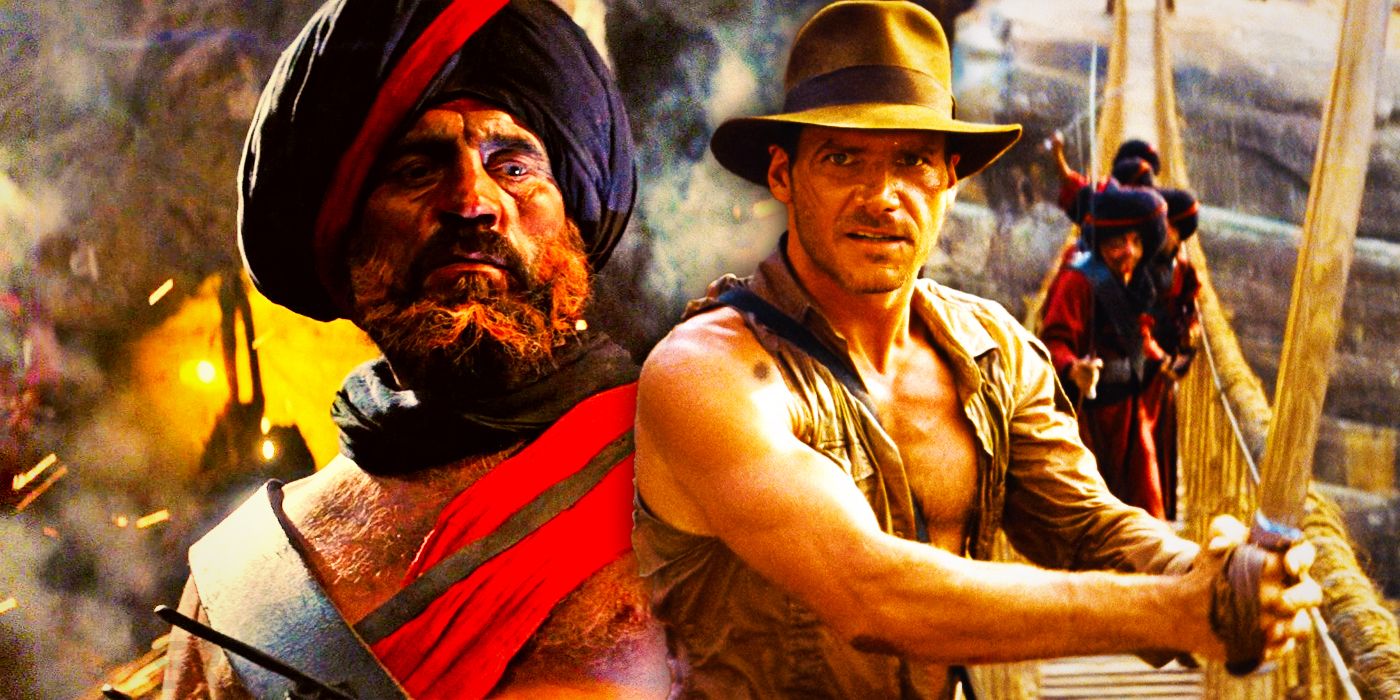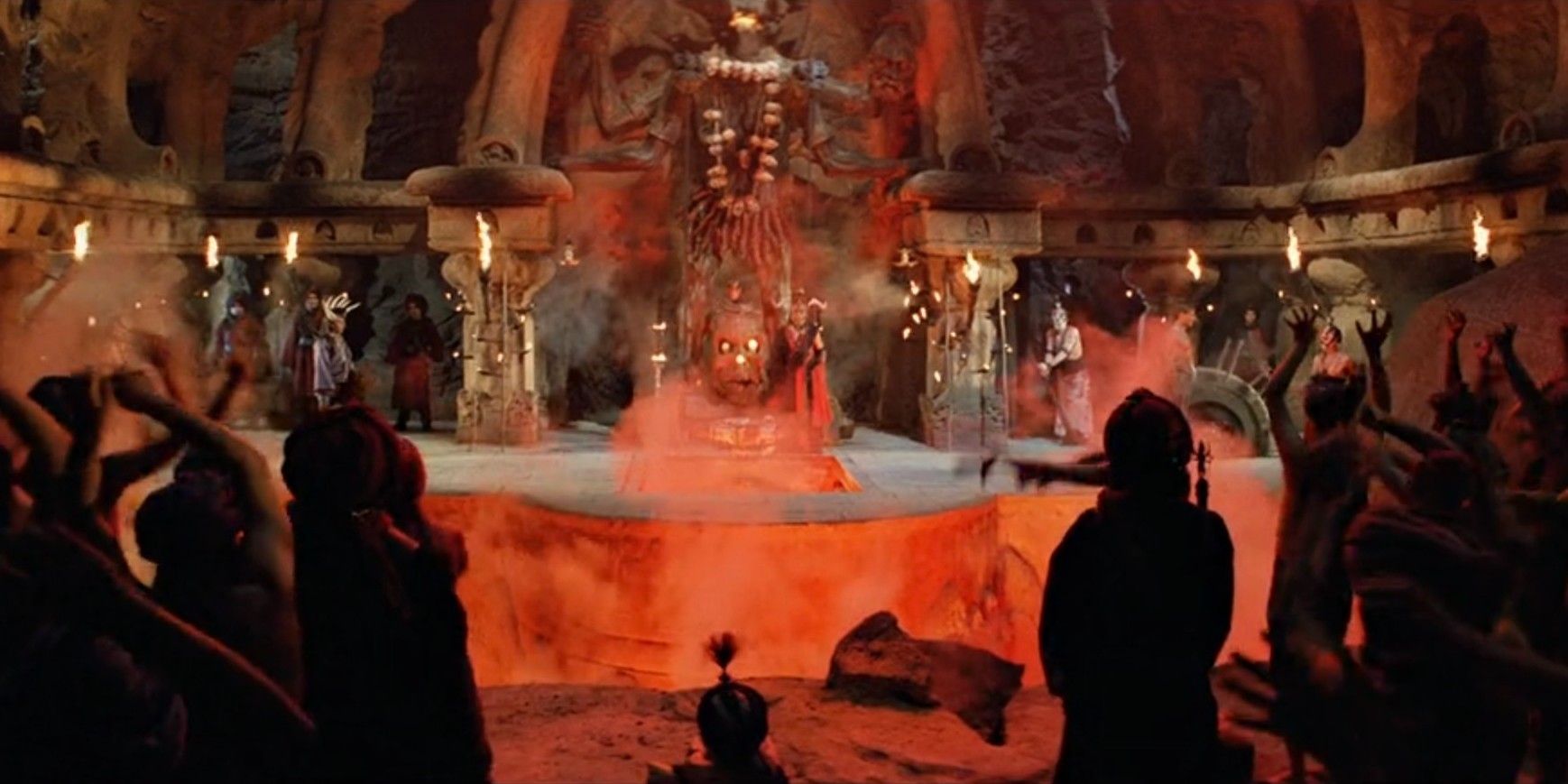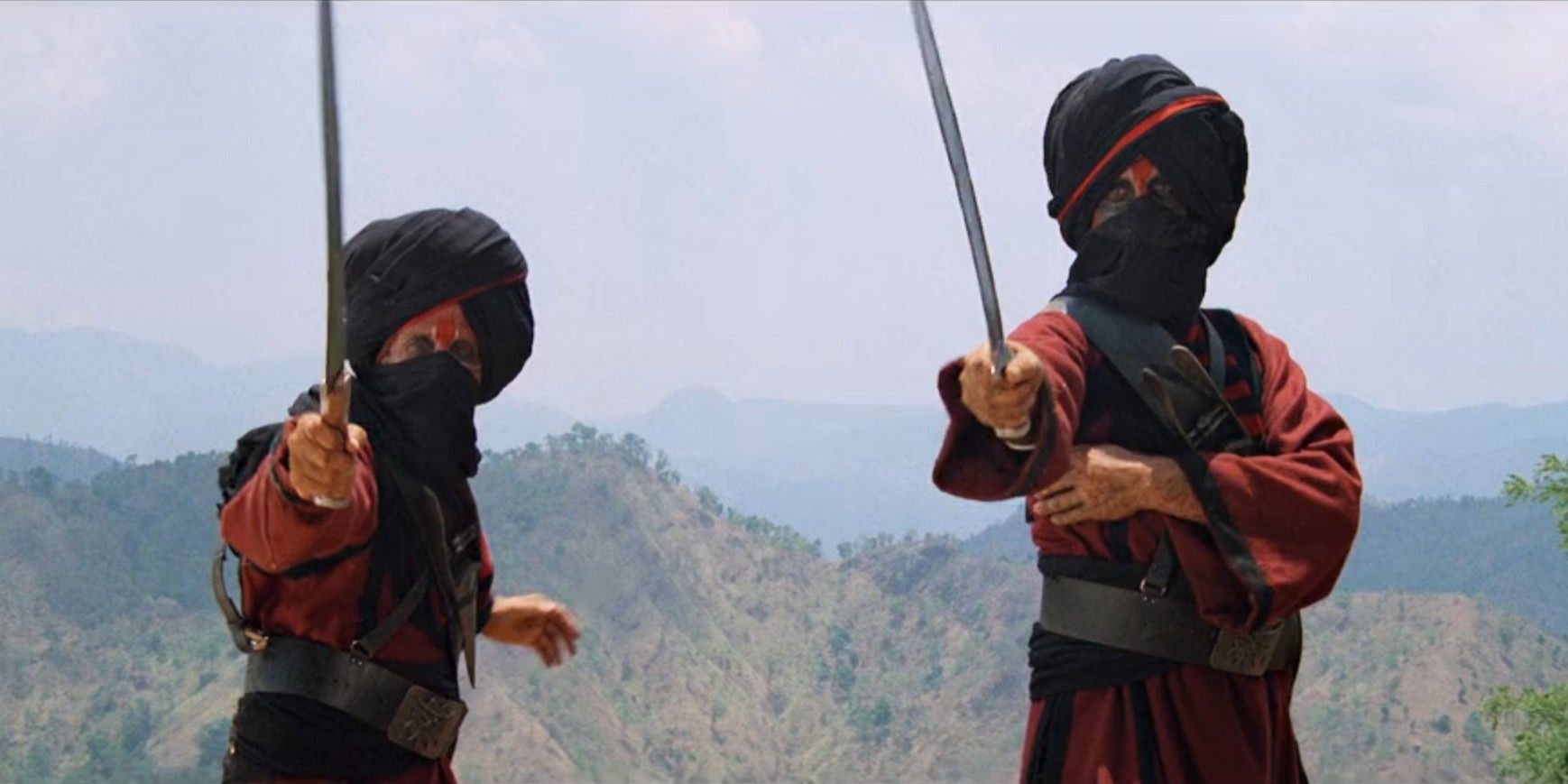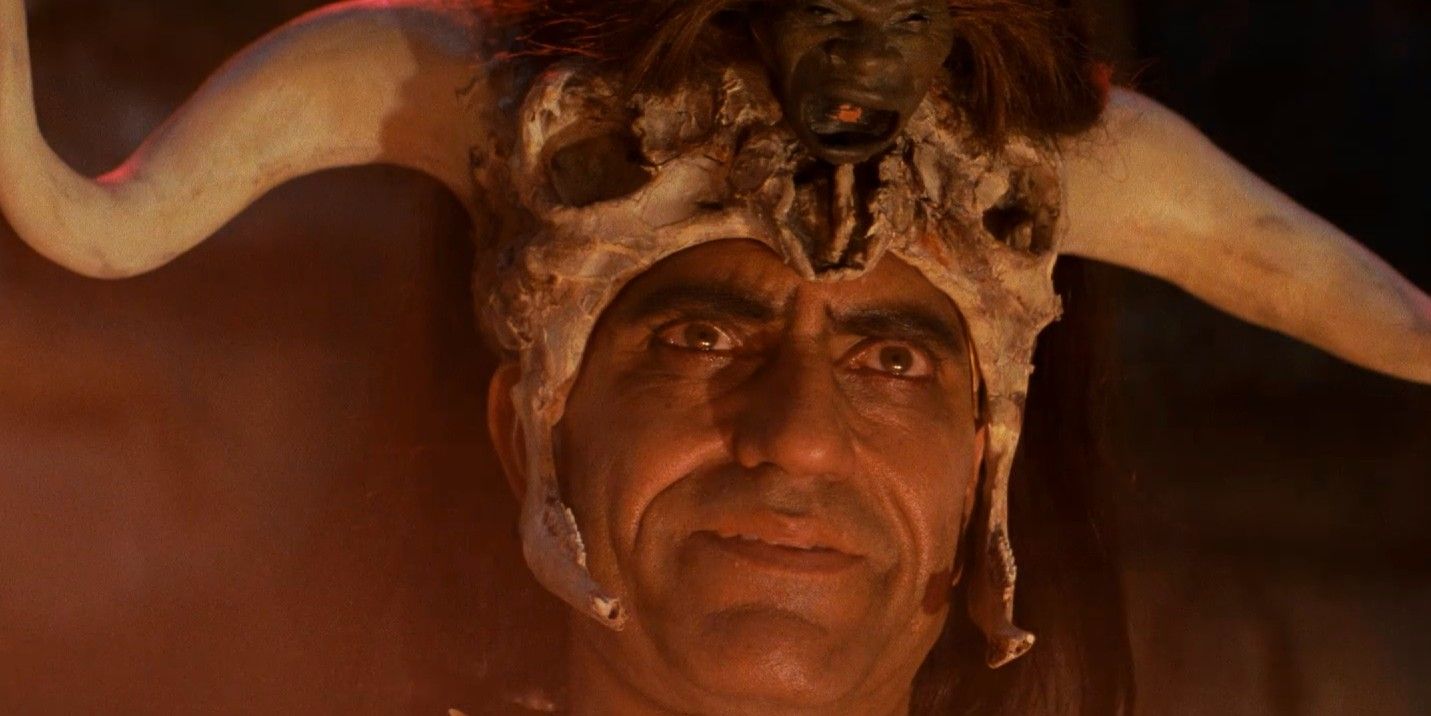Indiana Jones And The Temple Of Doom is a huge departure for the Harrison Ford franchise, and perhaps one of the biggest ways is its villains. Although The Temple Of Doom is the second Indiana Jones movie, it’s a prequel to Raiders Of The Lost Ark set in India. Instead of fighting Nazis, the much darker Temple Of Doom sees Indy aid a village, who have had both a mystical stone and their children stolen by a Thuggee cult. Rather than serving as another set of bumbling Indiana Jones villains, the Thuggees in Temple Of Doom are pure evil, posing a unique threat.
The Temple Of Doom and its Thuggee antagonists, as with most Indiana Jones stories, are rooted in history. Like Raiders Of The Lost Ark’s Nazis, Thuggees are a real group that existed in India. However, while Temple Of Doom got some aspects of Thuggee culture correct, the Indiana Jones movie took many liberties with its historical inspiration, leading to a controversial depiction of its Thuggee villains.
How Temple Of Doom Changed Thuggee Culture
Thuggees may have been a real gang in India, but many aspects of their culture and history were changed to better fit the Indiana Jones And The Temple Of Doom story. A huge change that The Temple Of Doom made to the historical origins of its villains are the Thuggees’ goals and methods. The Indiana Jones movie sees the Thuggees as evil priests who deal in ritual human sacrifice, child slavery, and black magic. In reality, Thuggees’ operations were smaller scale, focused on the robbery and killing of travelers. Though both versions of the Thuggees have similar motivations for their crimes, their methods differ, making Temple Of Doom’s villains appear more classically evil.
Another huge difference between The Temple Of Doom depiction of Thuggees and Thuggees’ real life origins is the timeline of their operations. Indiana Jones And The Temple Of Doom takes place during 1935, meaning that its evil Thuggee cult was active during the early 20th century. However, the real Thuggees were active far earlier than the 1930s, with the earliest reports dating back to the 14th century. By the 1870s, Thuggees were mostly extinct in India, several decades prior to The Temple Of Doom’s events.
Everything Temple Of Doom Got Right About Thuggees
While Indiana Jones And The Temple Of Doom changed a lot about Thuggees, the movie ended up getting some of the key details of Thuggee culture correct. The biggest aspect of real life Thuggee culture is their devotion and service to the Hindu goddess Kali, which is depicted in The Temple Of Doom. Both real life and Indiana Jones’ Thuggees believed their criminal actions were sanctioned by Kali, and that by committing these acts, they were currying favor with her. The Temple Of Doom’s Thuggees go much further in their service by committing ritualistic human sacrifices, but their devotion to Kali is historically accurate.
Another aspect of Thuggee culture that Indiana Jones And The Temple Of Doom got right is the cult’s actions and methodology. Just like in real life, Indiana Jones’ Thuggees commit robberies in addition to their killings. It’s the Thuggee cult’s stealing of the village’s sacred stone and children that sets the movie’s plot into motion, which, while larger stakes than the real Thuggees’ crimes, is accurate to the original group’s motives. The Temple Of Doom also accurately depicted the Thuggees’ usage of a rumal to strangle their victims. This method of killing appears several times in the movie, notably when Indy is ambushed in his bedroom at Pankot Palace.
Why Temple Of Doom's Villains Were So Controversial
Unsurprisingly, given the amount that The Temple Of Doom played with and changed both Indian and Thuggee culture, Indiana Jones And The Temple Of Doom’s villains are controversial. It’s not unheard of for movies to change historical facts, but Temple Of Doom’s changes are harmful to the culture it depicts. Since the depictions of Indian culture in Temple Of Doom are rooted in Indy's interactions with the evil Thuggees or subservient royals, the movie is seen as perpetuating negative stereotypes of Indian culture and Hinduism. The movie’s showcases of Indian culture were so controversial that it was banned from filming in India or opening in Indian theaters upon release.
Though Indiana Jones creators Steven Spielberg and George Lucas likely meant no harm in their depictions of Indian culture and the Thuggees in The Temple Of Doom, the movie perpetuates inaccuracies that are still prevalent in Western culture today. The Indiana Jones movie reflects Hollywood issues of colonialism, cultural representation, and cultural appropriation, leading to its controversial reception. Indiana Jones might be one of the most iconic movie franchises of all time, but its depictions of Indian culture and Thuggees shows that no franchise is infallible, and that Hollywood still has a long way to go when it comes to representation.




